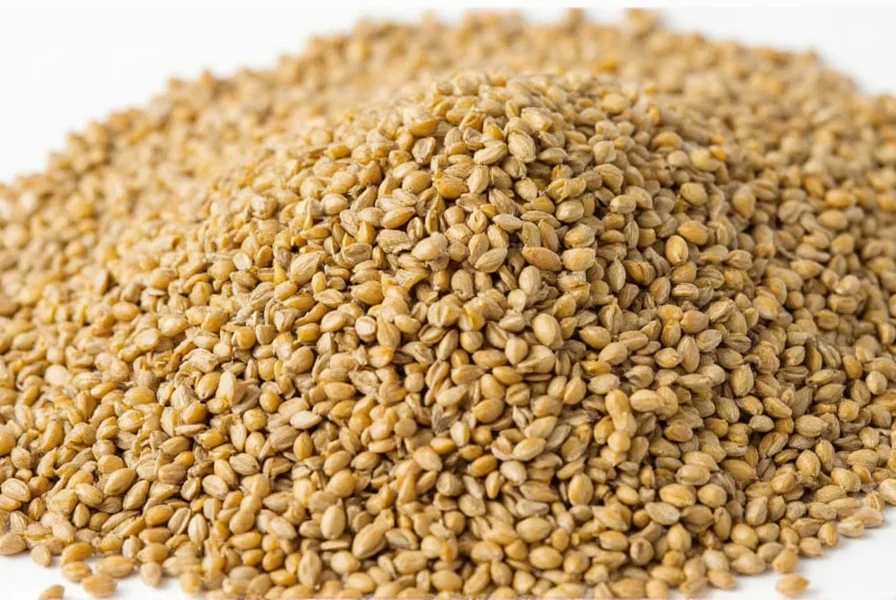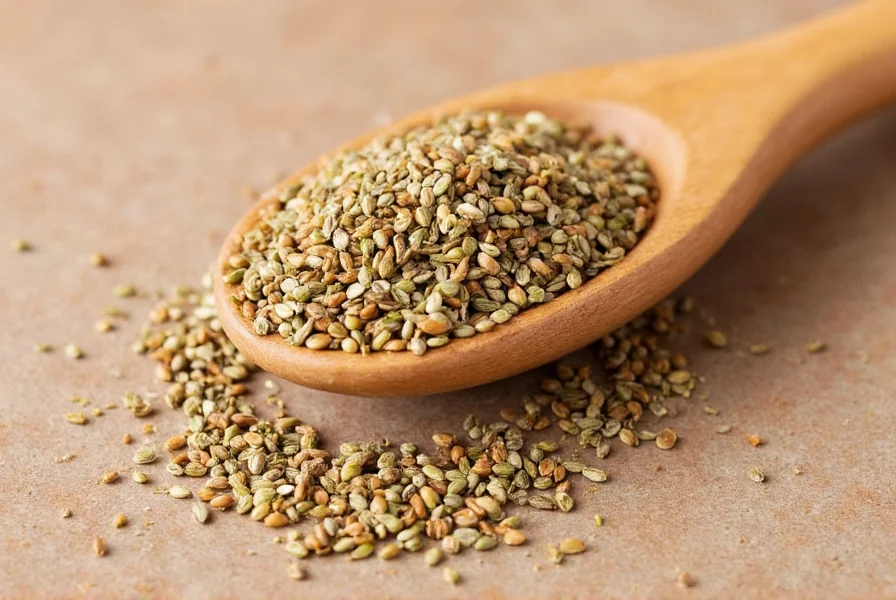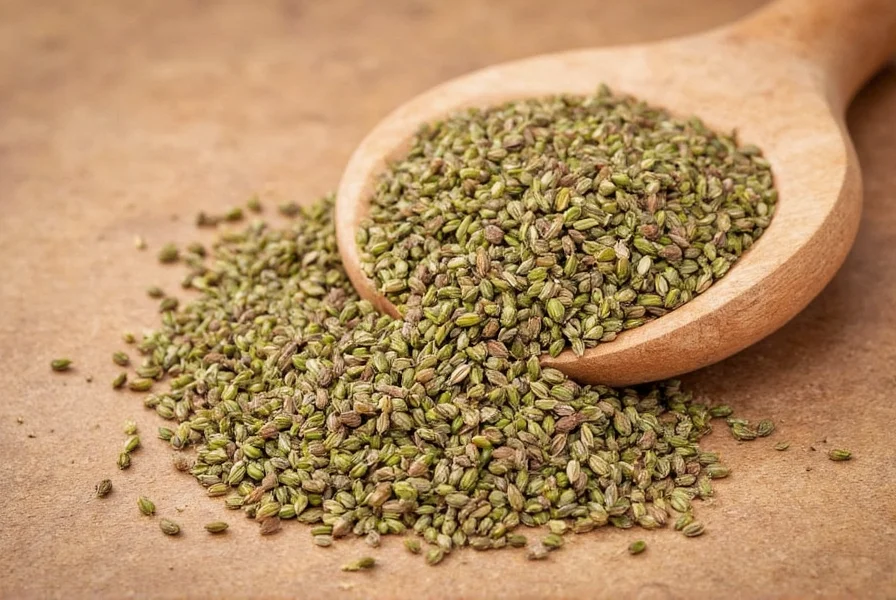Understanding what is coriander seed begins with recognizing its botanical origins. Coriander (Coriandrum sativum) is an annual herb that produces both the fresh leaves known as cilantro and the dried seeds we call coriander seeds. This dual-purpose plant has been cultivated for over 7,000 years, with evidence of its use found in ancient Egyptian tombs and Neolithic Swiss settlements.
Botanical Background and Global Production
Coriander belongs to the same plant family as carrots, parsley, and cumin. The plant grows to about 20-50 cm tall and produces small white or pink flowers that develop into the characteristic round seeds. While many people confuse coriander seeds vs cilantro, they're simply different parts of the same plant—cilantro refers to the fresh leaves and stems, while coriander seeds are the dried fruit.
| Top Coriander-Producing Countries | Annual Production (Metric Tons) | Primary Use |
|---|---|---|
| India | 250,000 | Culinary and medicinal |
| Morocco | 60,000 | Export and domestic use |
| Bulgaria | 25,000 | Essential oil production |
| Russia | 20,000 | Culinary applications |
Physical Characteristics and Flavor Profile
Coriander seeds measure approximately 3-5 mm in diameter and have a light tan to yellow-brown color when mature. They feature distinctive longitudinal ridges running along their surface. When crushed, they release a complex aroma that combines citrus (particularly lemon), floral, and slightly peppery notes.
The flavor transformation when toasting coriander seeds is remarkable—raw seeds have a more earthy, herbal quality, while toasted seeds develop deeper, warmer, and more citrus-forward characteristics. This makes them incredibly versatile in the kitchen, whether used whole in pickling brines or ground into spice blends.

Culinary Applications Around the World
Coriander seeds feature prominently in spice traditions across multiple continents. In Indian cuisine, they're a fundamental component of garam masala and curry powders. Middle Eastern cooks use them in baharat blends, while European bakers incorporate them into rye breads and pickling spices.
When exploring what is coriander seed used for in modern cooking, consider these applications:
- Whole seeds: Ideal for pickling, brines, and slow-cooked dishes where they can infuse flavor over time
- Ground coriander: Perfect for spice rubs, marinades, and dry mixes where immediate flavor release is desired
- Toast before use: Enhances the citrus notes and creates a more complex flavor profile
- Pairings: Works exceptionally well with cumin, turmeric, garlic, lemon, and other warm spices
Nutritional Value and Evidence-Based Health Benefits
Coriander seeds offer more than just flavor—they contain valuable nutrients and compounds with potential health benefits. A single tablespoon (7g) of ground coriander provides:
- Approximately 23 calories
- 2g dietary fiber (7% of daily value)
- Significant amounts of iron, magnesium, and manganese
- Antioxidants including linalool and pinene
Research suggests several potential health benefits associated with health benefits of coriander seeds. Studies indicate they may help regulate blood sugar levels, support digestive health, and exhibit anti-inflammatory properties. The essential oil component linalool shows promise in preliminary research for its calming effects.
Storage and Preparation Techniques
To maximize shelf life and flavor retention, proper storage of coriander seeds is essential. Whole seeds maintain their potency for 1-2 years when stored in an airtight container away from light and heat, while ground coriander loses flavor within 6 months.
For best results when how to use coriander seeds in cooking, follow these preparation tips:
- Dry toast whole seeds in a skillet over medium heat for 1-2 minutes until fragrant
- Cool completely before grinding to prevent clumping
- Use a spice grinder or mortar and pestle for optimal texture
- Grind only what you'll use within a few weeks for maximum flavor

Common Substitutes and Flavor Comparisons
When you need a replacement for coriander seeds, understanding coriander seeds vs cumin becomes important. While both are warm spices used in similar cuisines, they have distinct flavor profiles:
- Coriander seeds: Citrusy, floral, slightly sweet with lemon notes
- Cumin seeds: Earthy, smoky, more pungent with a bitter edge
Acceptable substitutes include:
- Fennel seeds (for the citrus notes, though sweeter)
- Caraway seeds (similar earthiness but more anise-like)
- A combination of cumin and a pinch of lemon zest
Practical Buying Guide
When selecting coriander seeds, look for uniform color and a fragrant aroma. Fresh seeds should feel heavy for their size and break cleanly when bitten. Avoid seeds that appear dusty or have lost their characteristic ridges, as these indicate age and flavor degradation.
For those wondering where to buy coriander seeds, they're widely available in:
- Supermarkets (spice aisle)
- International grocery stores (often fresher and less expensive)
- Online spice retailers (for highest quality and freshness)
- Farmer's markets (from specialty herb growers)
Frequently Asked Questions
What is the difference between coriander seeds and cilantro?
Coriander seeds and cilantro come from the same plant (Coriandrum sativum) but are different parts. Cilantro refers to the fresh leaves and stems, which have a bright, citrusy, sometimes soapy flavor. Coriander seeds are the dried fruit of the plant, offering a warm, citrusy, slightly floral flavor that's completely different from the leaves. The seeds are used as a spice, while cilantro is used as a fresh herb.
Can I substitute coriander seeds for ground coriander in recipes?
Yes, but with adjustments. One tablespoon of whole coriander seeds generally equals 1.5 teaspoons of ground coriander. For best results, toast the whole seeds first, then grind them. Keep in mind that freshly ground coriander has significantly more flavor than pre-ground spice, so you may need less than the conversion suggests.
Are coriander seeds healthy?
Coriander seeds offer several health benefits. They're rich in dietary fiber, antioxidants, and minerals like iron and magnesium. Research suggests they may help regulate blood sugar, support digestion, and have anti-inflammatory properties. A single tablespoon provides about 7% of your daily fiber needs and contains beneficial compounds like linalool. However, they should be consumed as part of a balanced diet rather than relied upon for specific medical treatment.
How should I store coriander seeds to maintain freshness?
Store whole coriander seeds in an airtight container away from light, heat, and moisture. A cool, dark cupboard works well for up to 2 years. For maximum shelf life, store in the refrigerator or freezer. Ground coriander loses potency much faster—within 6 months—so it's best to grind seeds as needed. Never store near the stove or oven, as heat accelerates flavor degradation.
Why do some recipes call for toasting coriander seeds?
Toast coriander seeds to enhance their flavor profile. The dry heat releases essential oils, transforming their earthy, herbal raw flavor into a warmer, more complex, citrus-forward aroma. Toasting typically takes 1-2 minutes in a dry skillet over medium heat until fragrant. This simple step significantly improves the depth of flavor in your dishes, making it worth the extra effort for most recipes calling for coriander seeds.











 浙公网安备
33010002000092号
浙公网安备
33010002000092号 浙B2-20120091-4
浙B2-20120091-4